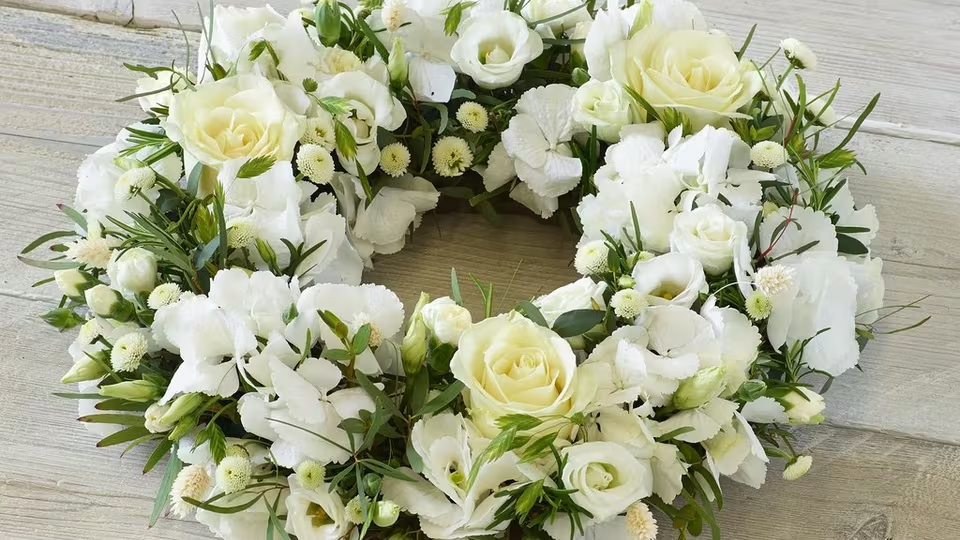How to Create Beautiful funeral flower arrangements
Losing a loved one is undoubtedly one of the most challenging experiences in life. In moments of grief and remembrance, funeral flower arrangements serve as a poignant expression of love, respect, and sympathy. Creating beautiful floral tributes not only honors the departed but also provides comfort to those left behind. Join us as we explore the art of crafting meaningful funeral flower arrangements that celebrate life and offer solace during times of sorrow.
The Purpose and Significance of Funeral Flower Arrangements
Funeral flower arrangements hold profound significance in honoring the life of a departed loved one. These floral displays symbolize love, respect, and remembrance, offering a visual representation of the emotions felt by those paying their respects. The beauty and fragrance of flowers bring comfort and solace to grieving hearts, creating a peaceful atmosphere during a somber occasion.
The presence of flowers at a funeral or memorial service helps to convey heartfelt condolences and support to the bereaved family. Each bloom carries its own symbolic meaning, allowing for personal touches that reflect the unique personality and spirit of the deceased. Funeral flower arrangements serve as a tangible reminder of the love shared with the departed soul, fostering moments of reflection and healing amidst sorrowful goodbyes.
Choosing the Right Flowers for a Funeral
When selecting flowers for a funeral, it’s essential to consider the preferences and personality of the deceased. Opt for blooms that hold special meaning or significance to honor their memory. Roses symbolize love and are a timeless choice for expressing heartfelt condolences. Lilies represent purity and innocence, making them a popular option for memorial services.
Consider the color of the flowers as well – white signifies peace and reverence, while soft pastels convey sympathy and comfort. If you’re unsure about which flowers to choose, consult with a florist who can guide you based on your requirements.
It’s also important to think about where the arrangements will be displayed – larger pieces like standing sprays or casket covers are suitable for prominent areas, while smaller bouquets or wreaths can be placed near photos or keepsakes. Remember that each flower carries its own symbolism, so select thoughtfully to create a meaningful tribute through floral arrangements at the funeral service.
Different Types of Funeral Flower Arrangements
When it comes to funeral flower arrangements, there are various types that can convey different emotions and sentiments. One common arrangement is the casket spray, which is placed on top of the casket during the service. This large display typically includes a mix of flowers in soft colors like white or pastels.
Another popular option is the standing spray, which is designed to stand on an easel and often serves as a focal point at the service. These arrangements can be customized based on preferences such as favorite flowers or colors.
For a more intimate touch, consider smaller arrangements like floral baskets or wreaths. These can be placed near photos of the deceased or around the venue to create a warm atmosphere.
Sympathy bouquets are versatile options that can be sent directly to the home of grieving loved ones as a thoughtful gesture. These smaller arrangements are perfect for expressing condolences in a personal way.
Tips for Creating a Meaningful and Personalized Arrangement
When creating funeral flower arrangements, consider the deceased’s favorite flowers or colors to add a personal touch. Incorporating blooms that held special meaning to them can bring comfort to grieving loved ones.
Think about the size and style of the arrangement based on where it will be displayed at the service. Larger pieces like standing sprays or casket covers are suitable for prominent areas, while smaller bouquets or wreaths work well on tables or pedestals.
Include elements that reflect the person’s interests and personality, such as sports-themed decorations for a sports enthusiast or music notes for a musician. These details can evoke fond memories and celebrate the individuality of the departed.
Adding meaningful accents like ribbons with personalized messages or photos nestled within the arrangement can create a touching tribute. Small gestures like these can make a big impact in honoring their life and legacy through flowers.
Mistakes to Avoid When Creating Funeral Flower Arrangements
When creating funeral flower arrangements, it’s essential to avoid some common mistakes that can detract from the beauty and significance of the tribute. One mistake to steer clear of is using overly bright or vibrant colors that may not convey the solemnity of the occasion. Opt for more muted tones like whites, creams, blues, and greens for a more appropriate feel.
Another mistake to avoid is overcrowding the arrangement with too many different types of flowers. Keeping it simple and focused on a few key blooms can create a more elegant look. Additionally, make sure to consider any cultural or religious traditions when selecting flowers to ensure they are respectful and meaningful.
It’s also important to double-check spelling and accuracy when ordering personalized ribbons or cards for the arrangement. Typos or incorrect information can be distracting and take away from the overall message you’re trying to convey. Don’t forget about scent sensitivity – choose fragrant blooms wisely as strong scents may overwhelm some attendees during this sensitive time.
Ideas for Unique and Creative Arrangements
When it comes to creating funeral flower arrangements, thinking outside the box can result in truly unique and meaningful tributes. One idea is to incorporate personal items or memorabilia into the arrangement, such as photos, letters, or small keepsakes that belonged to the deceased. This adds a personalized touch and honors their life in a special way.
Another creative approach is to choose flowers based on their symbolism or meaning. For example, lilies symbolize purity and rebirth, while roses signify love and remembrance. By selecting blooms with intention, you can convey specific emotions and messages through the arrangement.
Consider exploring non-traditional color palettes or flower combinations to create a visually striking display. Mixing bold hues like deep purples with soft pastels can add depth and complexity to the arrangement. Additionally, experimenting with different textures and foliage can elevate the overall aesthetic of the design.
Don’t be afraid to think beyond traditional vase arrangements – consider using alternative containers like vintage urns, wooden boxes, or even woven baskets for a rustic touch. Incorporating unexpected elements like feathers, branches, or succulents can also add an interesting twist to the composition.
By embracing creativity and incorporating personal touches into your funeral flower arrangements, you can honor your loved one’s memory in a truly unique and special way that celebrates their life beautifully.
Conclusion
In times of grief, funeral flower arrangements serve as a beautiful and meaningful way to honor the departed and offer comfort to those who are mourning. By carefully selecting the right flowers, choosing the appropriate type of arrangement, and infusing personal touches, you can create a tribute that truly reflects the life and spirit of your loved one.
Remember to avoid common mistakes like neglecting symbolism or overcrowding the arrangement. Instead, focus on creating something unique and heartfelt. Whether it’s a traditional wreath, a personalized bouquet, or an unconventional display, let your creativity shine through in crafting a memorable tribute.
Funeral flower arrangements are not just about aesthetics; they are about conveying emotions and memories in a tangible form. With thoughtfulness and care, you can create beautiful floral tributes that pay homage to the life that was lived and bring solace to those left behind.





